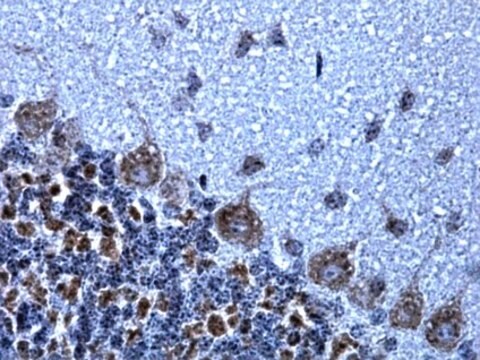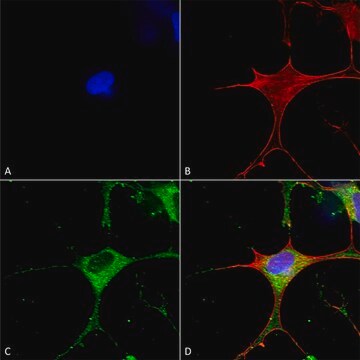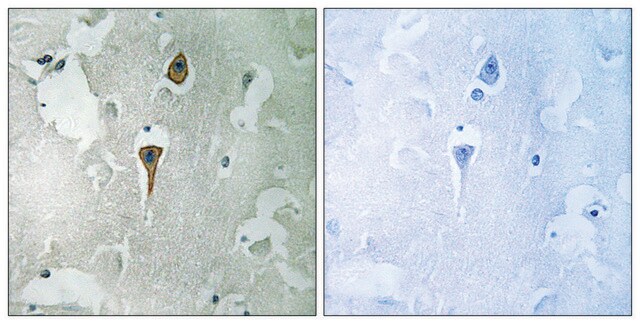AB9864
Anti-NMDAR1 Antibody, rabbit monoclonal
culture supernatant, clone 1.17.2.6, Chemicon®
Synonym(s):
N-methyl-D-aspartate receptor channel, subunit zeta-1, N-methyl-D-aspartate receptor subunit NR1, NMDA receptor 1, glutamate [NMDA] receptor subunit zeta 1, glutamate receptor, ionotropic, N-methyl D-aspartate 1
About This Item
Recommended Products
biological source
rabbit
Quality Level
antibody form
culture supernatant
antibody product type
primary antibodies
clone
1.17.2.6, monoclonal
species reactivity
rat
manufacturer/tradename
Chemicon®
technique(s)
immunohistochemistry: suitable
western blot: suitable
isotype
IgG
NCBI accession no.
UniProt accession no.
shipped in
wet ice
target post-translational modification
unmodified
Gene Information
rat ... Gpr132(314480)
General description
Specificity
Immunogen
Application
AB9864 can be used for using 4% paraformaldehyde or paraformaldehyde/glutaraldehyde fixed rat tissue. Suggested working dilution for light microscopy is 1:1,000-1:2,000.
Western blot:
1:1,000-1:2,000 using ECL on rat brain lysate.
Optimal working dilutions must be determined by end user.
Neuroscience
Neurotransmitters & Receptors
Quality
Western Blot Analysis:
1:1000 dilution of this lot detected NMDAR1 on 10 μg of rat brain lysates
Target description
Linkage
Physical form
Storage and Stability
Analysis Note
Brain tissue
Other Notes
Legal Information
Disclaimer
Not finding the right product?
Try our Product Selector Tool.
Storage Class Code
12 - Non Combustible Liquids
WGK
WGK 2
Certificates of Analysis (COA)
Search for Certificates of Analysis (COA) by entering the products Lot/Batch Number. Lot and Batch Numbers can be found on a product’s label following the words ‘Lot’ or ‘Batch’.
Already Own This Product?
Find documentation for the products that you have recently purchased in the Document Library.
Our team of scientists has experience in all areas of research including Life Science, Material Science, Chemical Synthesis, Chromatography, Analytical and many others.
Contact Technical Service








